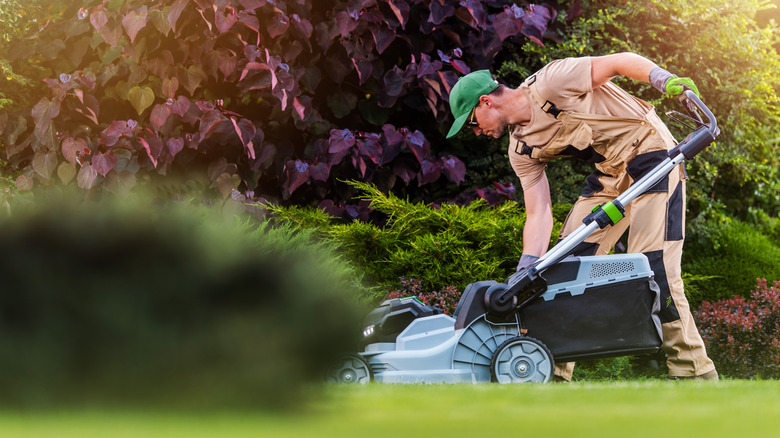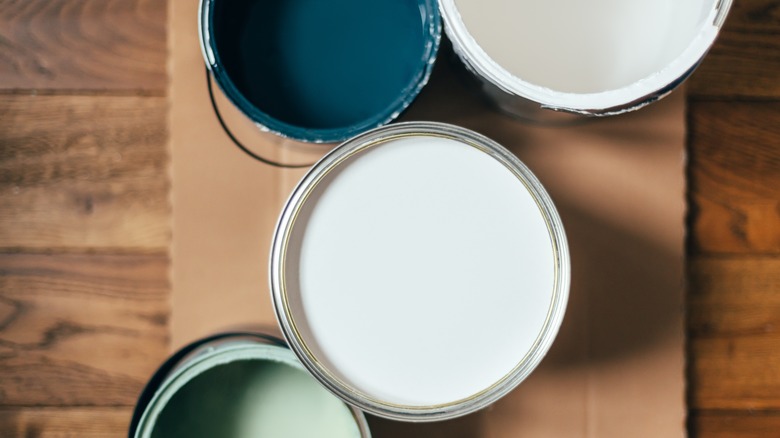Why You Should Consider Grass Paint If You Live In A Warmer Climate
Living in a warmer climate often means facing the challenges of maintaining a lush, green lawn. Your grass frequently becomes a casualty of harsh, dry drought conditions, displaying unsightly yellow patches that detract from your home's curb appeal. This lack of color can extend to winter, as warm-season grasses are known to turn yellow when it gets colder. Keeping your lawn green often requires lots of watering and fertilization — an option that's not always environmentally or financially viable. But before you resort to extensive measures, consider an innovative solution: grass paint.
Grass paint serves as a temporary cosmetic fix for browning or yellowing spots in your yard. It's a pragmatic approach that allows you to address the root issue, such as soil quality or irrigation problems, while waiting for the natural green to return. This approach not only saves water, a precious resource in warmer climates, but also ensures your lawn looks inviting and well-maintained.
The best part? Grass paint does not harm your lawn. The grass underneath continues to live and will resume its growth once the drought conditions subside. So, what exactly is grass paint made of? Typically, it contains non-toxic and biodegradable ingredients, ensuring it's safe for the environment, your family, and pets. The composition often includes a blend of natural pigments and binders that adhere to the grass blades, providing a natural-looking green hue.
Grass paint: preparations and application
There are different types of grass paint available on the market, catering to various lawn conditions and preferences. Some popular brands include LawnLift, EnviroColor, and Endurant. Each brand offers unique formulations, so it's important to choose one that aligns with your lawn's specific needs. Applying grass paint is a straightforward task, but it's crucial to do it right to achieve the best results. Choose the right day for the job; a dry, calm day is ideal, as it prevents the paint from washing away or spreading unevenly due to rain or wind. Also, prepare by mowing your lawn to a normal length and removing any debris, leaves, or loose grass.
Next, mix the grass paint. Follow the instructions on your chosen product carefully. You may need to dilute the paint with water, especially if it's too dark. The ratio varies depending on the product, so pay close attention to the guidelines provided. Once your paint is ready, fill a garden sprayer with the mixture. If you don't have a garden sprayer, a large spray bottle can work for smaller areas. Test the sprayer on a small, inconspicuous area first to get a feel for the application and to ensure the color is to your liking.
Now, apply the paint in even, overlapping strokes. Start from one corner of your lawn and work your way across systematically to avoid missing spots. Be thorough but avoid over-saturating any area, as this can lead to an unnatural appearance.
Understanding grass paint safety and precautions
When considering grass paint for your lawn, there are a few key points to keep in mind to ensure a successful and safe application. Before applying grass paint, read the product label carefully. Some grass paints include fertilizers to nourish your lawn while coloring it. While this can be beneficial, be cautious if you've recently fertilized your lawn. Over-fertilization can lead to nutrient burn, where excessive nutrients damage the grass roots, causing further yellowing or even grass death.
Always wear appropriate clothing and protective gear, such as gloves and glasses, when applying grass paint. This is more about keeping yourself clean than safety, as the paint can stain clothes and skin. It's also important to let the paint dry completely before allowing pets or people on the lawn. Wet paint can transfer to paws or shoes, leading to unwanted green stains. Be mindful of the surrounding areas when spraying. Cover any nearby plants, pathways, or garden furniture to protect them from overspray.
If you have an irrigation system, turn it off before application and keep it off until the paint is dry. This prevents the freshly applied paint from being washed away or diluted, ensuring your efforts aren't wasted. Lastly, consider longevity and maintenance. Grass paint is durable, but it's not a permanent solution. It will gradually fade with lawn growth and mowing. Regular lawn care, such as mowing and trimming, can continue as usual without affecting the painted grass.


